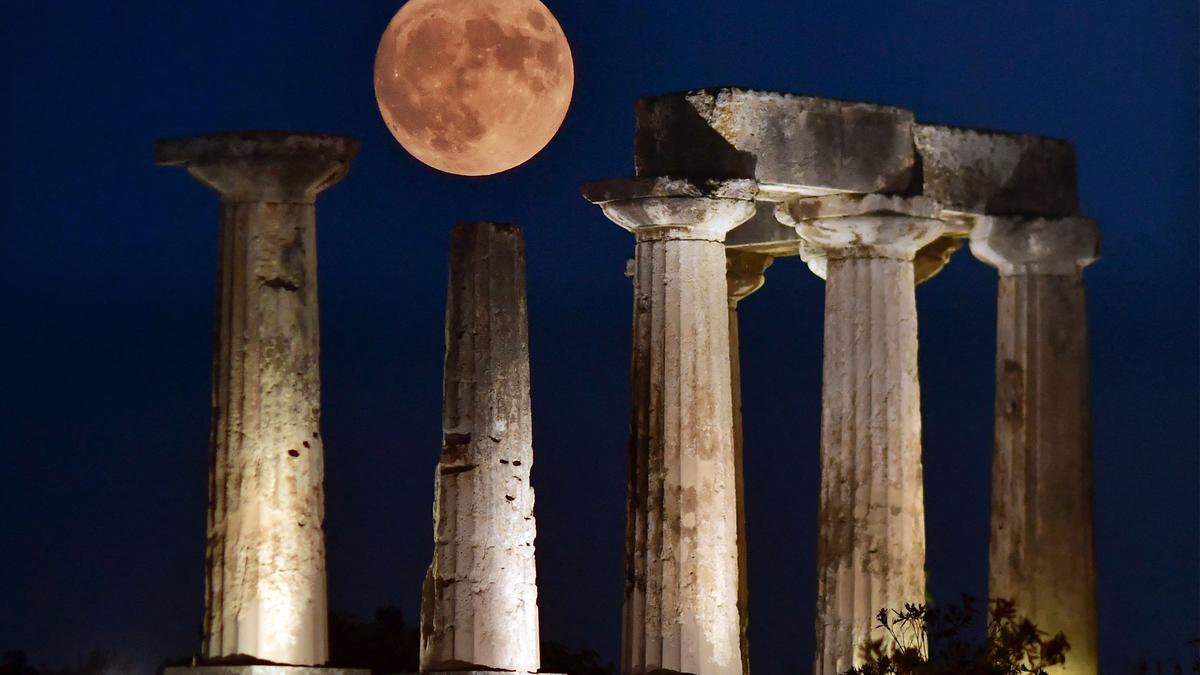
On August 30, 2023, a blue moon will rise over the Temple of Apollo in ancient Corinth, Greece. | Photo credit: AFP
The blue moon is a common example of an invented tradition—something that someone claims is an ancient, time-honored practice, but which was actually invented relatively recently. A second full moon in a single month is usually called a blue moon. But there are other ways the moon can be blue, including literally.
On April 5, 1815, for example, the Tambora volcano in what is now Indonesia caused the most powerful volcanic eruption in history. The year before, the Mayon volcano in the Philippines had erupted violently. The effects of these volcanoes, combined with other climatic factors, caused the Earth’s temperature to drop by 0.4 to 0.7 °C in 1816, leading to what has since been called the “year without a summer.” The dust and other small particles floating in the air may have caused the moon to appear blue, according to a description in the poem “Alastor,” written by Percy Bysshe Shelley in that fateful year.

After the explosion of the Krakatoa caldera in 1883, the Royal Society in London noted that in many parts of the world the moon appeared blue and the sun greenish.
The use of the term “blue moon” as a metaphor for a long period of time originated in the early 1820s, and its use to describe the second full moon of a month dates from a farmer’s calendar published in the United States in 1937. There was such a blue moon in August 2023.

